Philips OLED 809 is quite a versatile television that appeals to a wide range of consumers. Its standout feature among all the TV models on the market is the multicoloured Ambilight backlighting. It often allows for even greater immersion and engagement in the world of film. What is most important in televisions—contrast, black levels, and colour reproduction—are all at a high standard, which is something that will always impress in OLED TVs. The tested television, while performing quite well in our tests, does have some notable drawbacks. These include the quality of tonal transitions and the jumpy operation of the dynamic tone mapping feature. In some cases, these can be slightly irritating to sensitive eyes. However, Philips OLED 809 performs really well in other aspects, particularly in two areas: gaming performance and motion smoothing. The former stands out significantly, as each of the implemented features operates without the slightest hiccup, allowing for an even more immersive gaming experience. As for motion smoothness, it matches the high level of support for gaming. Thanks to two sliders, whose effects are noticeable at every position, every user is able to find the best level of smoothing for themselves. One cannot overlook the Google TV system, which operates very smoothly and during the tests, there were no instances of any "stuttering".
- Matching (Score)
- Our verdict
- TV appearance
- Where to buy
- Contrast and black detail
- HDR effect quality
- Factory color reproduction
- Color reproduction after calibration
- Smoothness of tonal transitions
- Image scaling and smoothness of tonal transitions
- Blur and motion smoothness
- Console compatibility and gaming features
- Input lag
- Compatibility with PC
- Viewing angles
- TV efficiency during daytime
- Details about the matrix
- TV features
- Apps
- Playing files from USB
- Sound
Philips OLED809/819 vs TCL C9K
Direct compare
OLED809 / OLED819 / AMIBLIGHT TV
C9K

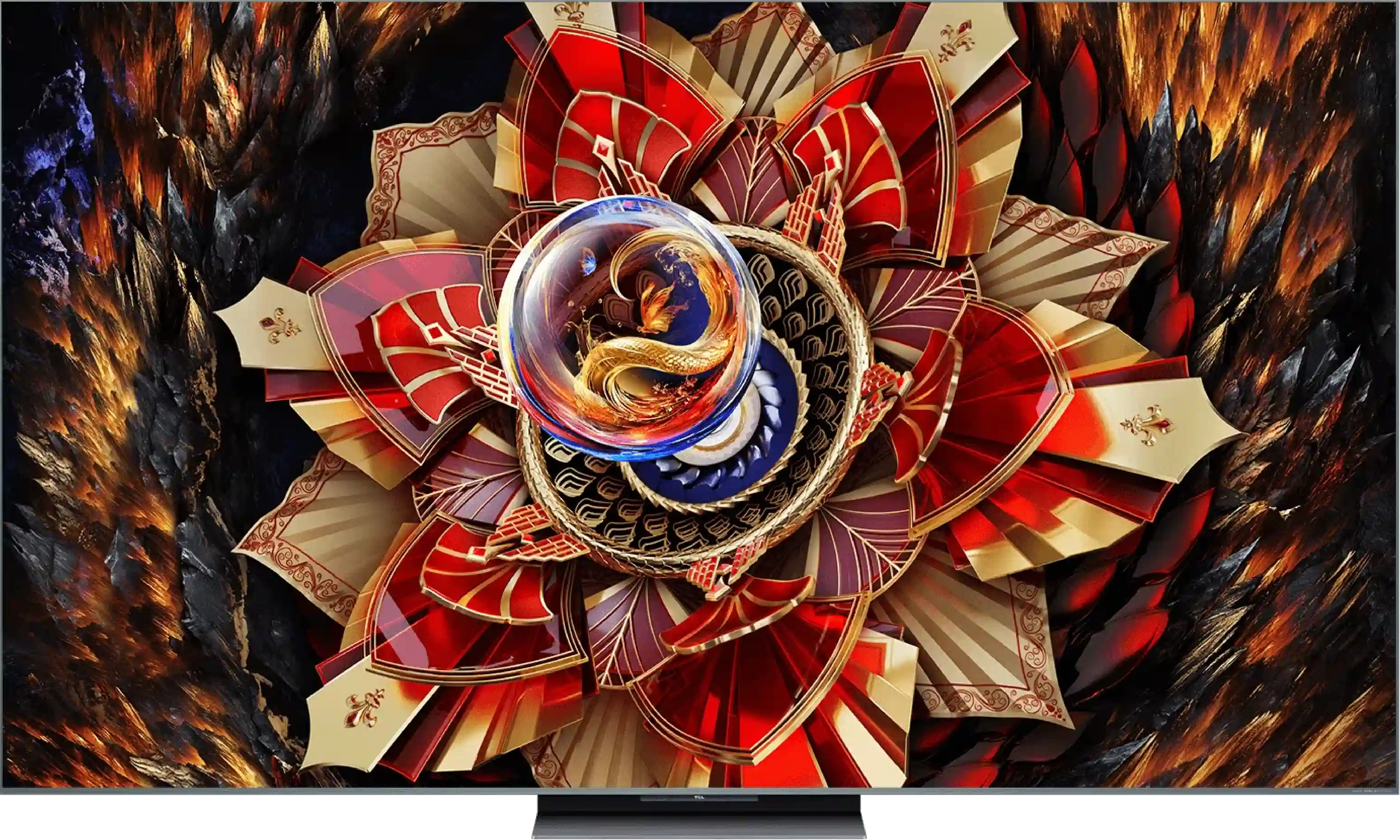
Panel type: WRGB OLED
Resolution: 3840x2160
System: Google TV
Model year: 2024
Complete the survey to find out the result

Panel type: LCD VA
Resolution: 3840x2160
System: Google TV
Model year: 2025
Complete the survey to find out the result

Overall rating
7.6
7.7
Movies and series in UHD quality
7.3
7.4
Classic TV, YouTube
7.8
7.0
Sports broadcasts (TV and apps)
8.2
6.8
Gaming on console
9.2
8.9
TV as a computer monitor
6.4
8.6
Watching in bright light
5.5
7.0
Utility functions
7.8
7.7
Apps
9.6
9.6
Sound quality
7.1
7.9
Complete the survey to find out what fits your preferences
Advantages
Extensive Google TV system with good app support
Very good collaboration with the console
Good image smoothness and an extensive system for improving it
Multicoloured Ambilight backlighting
Very good contrast and black levels
Very high brightness
Support for all HDR formats including Dolby Vision
Fast 144Hz panel - for gaming and sports enthusiasts
Many features for gamers: VRR, ALLM, low input lag, etc.
GoogleTV operating system with a wide range of applications
Great sound branded Bang & Olufsen
Improved viewing angles thanks to WHVA panel
Disadvantages
Poor factory colour reproduction (can be fixed through calibration)
Strongly contrasting tonal transitions
Average legibility of fonts when connected to a computer
Local dimming needs improvement
Only 2 HDMI 2.1 ports
No recording function from built-in tuners and no PiP
No smaller variants like 55"
Our verdict
The TCL C9K is a television that on paper looks like a showcase of the manufacturer's prowess – thousands of Mini-LED zones, a WHVA panel, audio system by Bang & Olufsen, full HDR format support, gaming at 144 Hz, and even 288 Hz at lower resolutions. It’s clear that TCL wanted to pack in absolutely everything they had that was best. And indeed – in many respects, the C9K can impress. The brightness is immense, HDR can be stunning in larger scenes, motion fluidity and gamer capabilities are at a top level, and the sound – for a TV speaker – sounds really good. It’s equipment that can easily be regarded as the hub of home entertainment. But there's also another side to the coin. Brightness management simply falters despite the incredible technical specification – smaller details often get lost in shadows or are burned out. And although synthetic tests of contrast and brightness appear outstanding, in day-to-day watching of films and series the effect isn't as impressive.
To summarise briefly: the C9K is a television full of contrasts – literally and metaphorically. It can deliver experiences close to the top screens, but it’s still clear that TCL needs to work on software and optimisation. If someone is looking for a screen for gaming, sports or spectacular blockbusters – they will be thrilled. However, if they are counting on perfect reproduction of the director's vision and think they have managed to buy an absolutely top model at half the price of the competition, they will unfortunately be disappointed. It’s a pity, because the technological potential here is really immense – just a bit of common sense in its application was lacking.
TV appearance



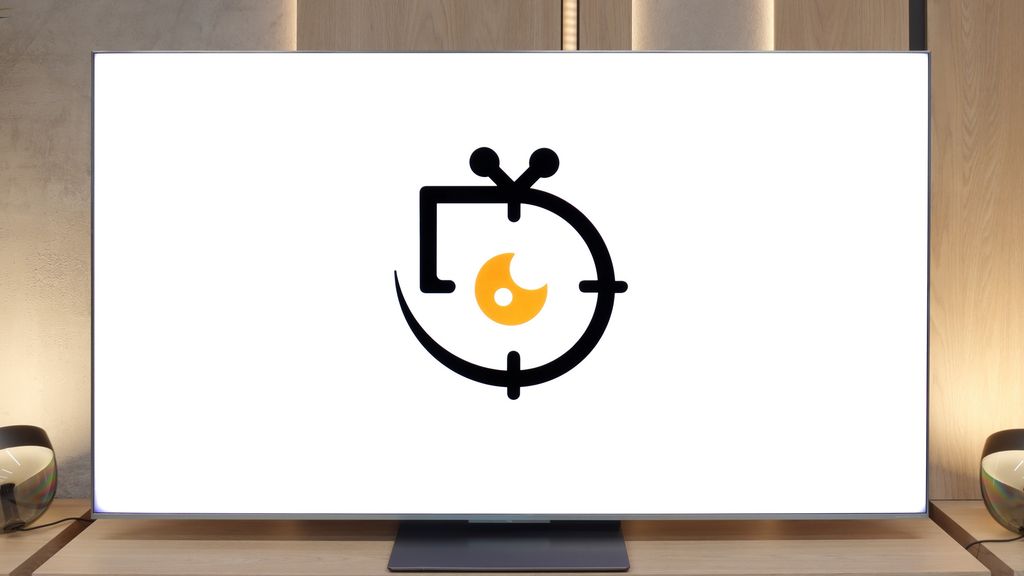
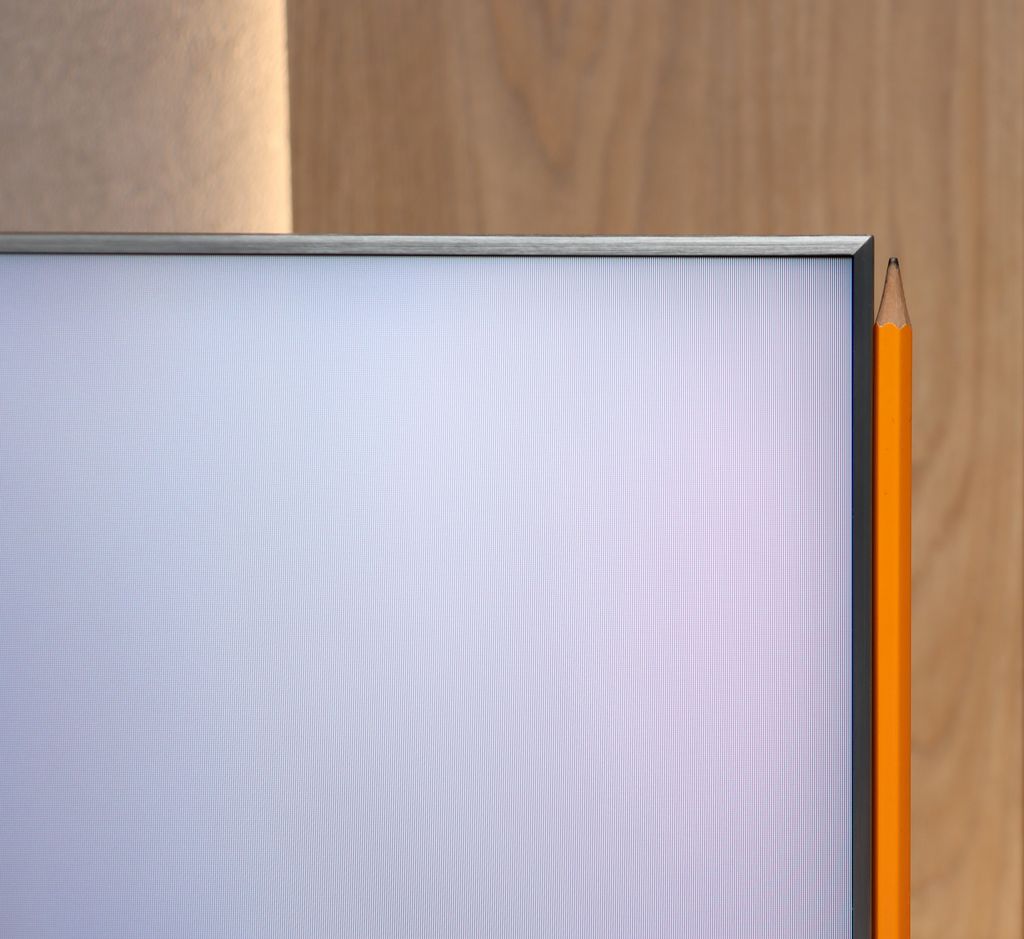
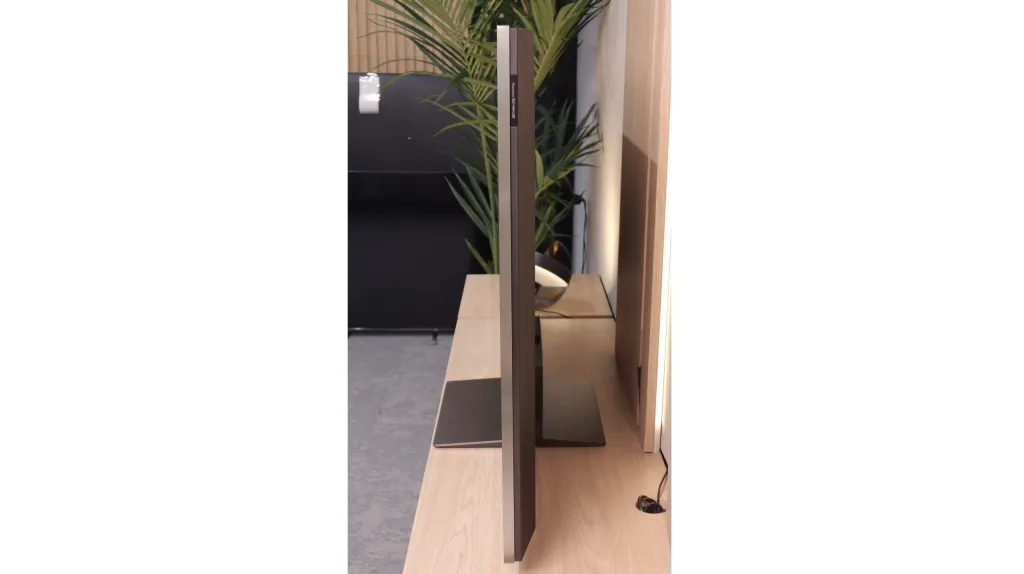
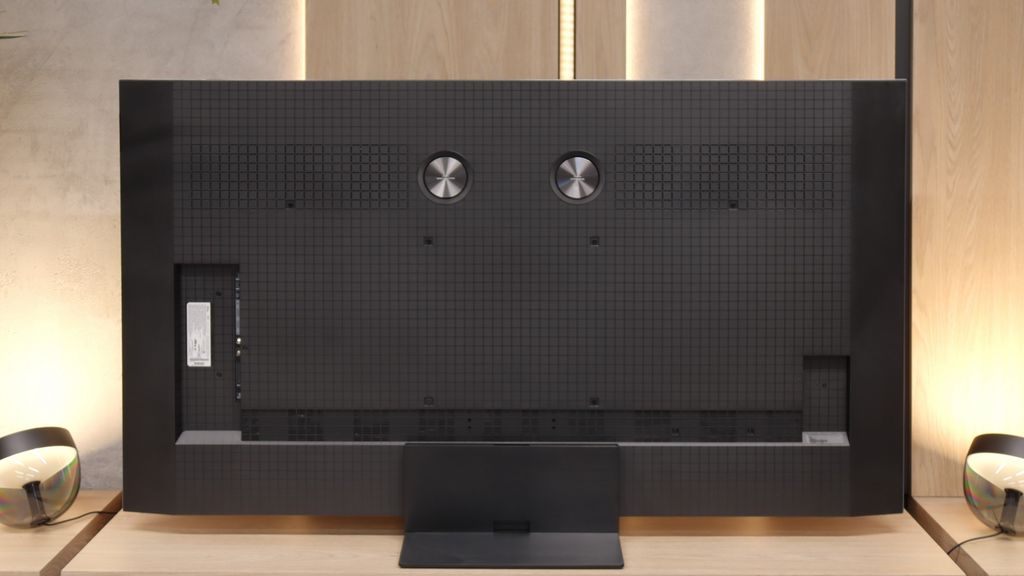
Contrast and black detail
10/10
8.1/10
Local dimming function: Yes, number of zones: 3024 (42 x 72)
Contrast:

Result
∞:1

Result
∞:1

Result
∞:1

Result
∞:1

Result
∞:1

Result
459,000:1

Result
72,750:1

Result
30,350:1

Result
9,800:1

Result
12,200:1
Halo effect and black detail visibility:

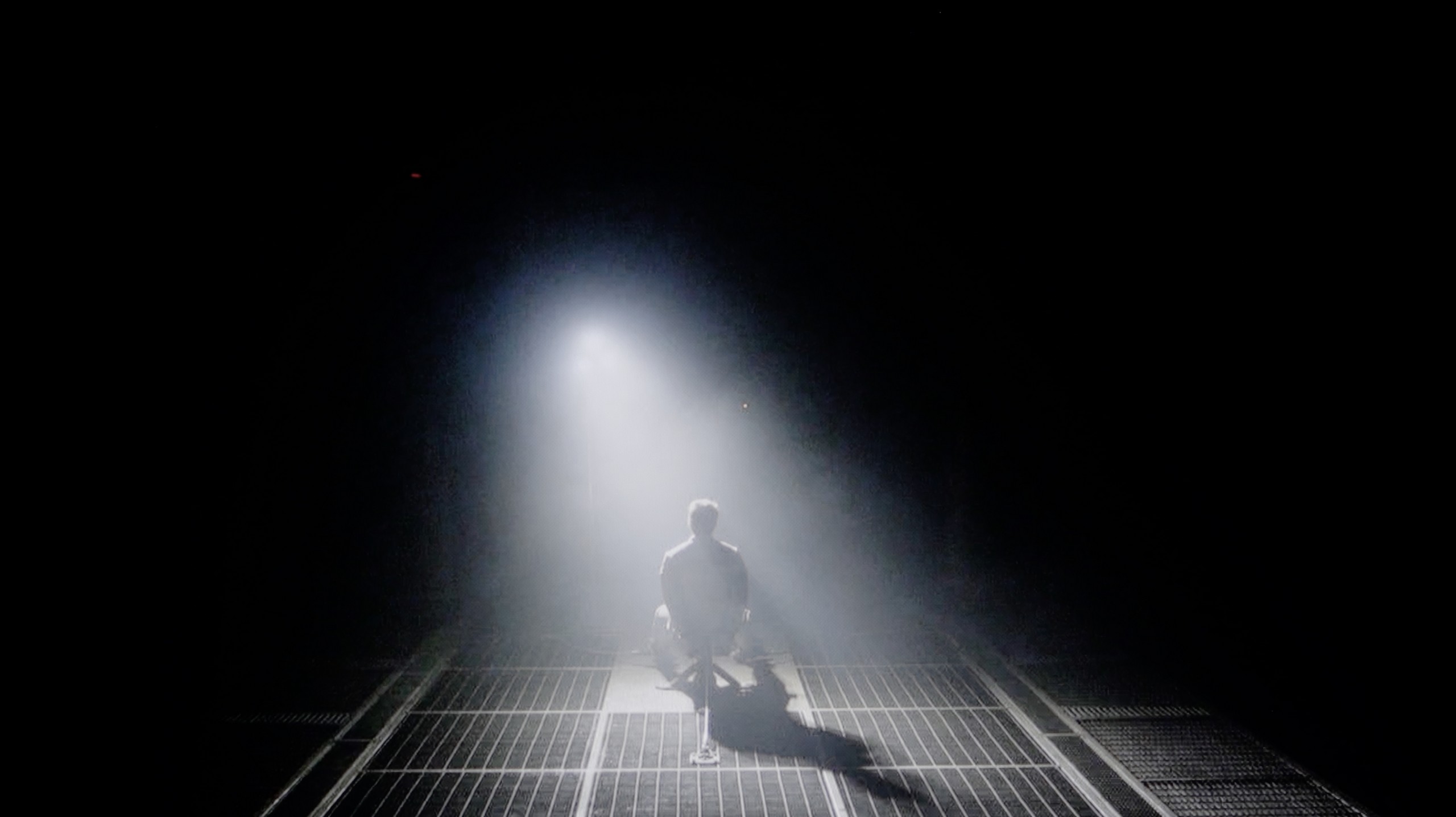
Philips OLED 809, as the name suggests, uses an organic matrix. Like the vast majority of manufacturers, it comes from the LG Displays factory, which is not surprising, as other leading manufacturers, such as Sony and Panasonic, also use them. The application of this type of panel allows for achieving an ideal result in the contrast and black tests. Thanks to such results, the image is incredibly plastic and free from any blooming effect of bright texts on a dark background, which has become an inherent feature of televisions with local dimming. This is enabled by the very construction of the panel, which is not made up of many layers of filters, but of organic conductive polymers, controlled by electrical impulses. Therefore, if we want to achieve black, the pixel turns off to a value of 0, rather than being covered up. The lights present in the test image are perfectly separated from each other, which is extremely difficult, and often impossible for LCD televisions. One of the strongest points of Philips OLED 809 is its ability to render contrasts. Philips OLED809 test showed that the television handles the separation of bright elements, such as headlights, from the dark background excellently.
What immediately sets the C9K apart from the C8K model is the number of local dimming zones. In the 65-inch version, we counted… over 3000! I must admit – it’s a true show of force from TCL, who crammed literally everything they had on hand into this television. On paper, it makes a huge impression and indeed – in less demanding film scenes, the blacks look fantastic. The level is absolutely top-notch, and the separation of lights from dark parts of the image can be astonishing. The problem is that this impressive specification doesn’t always translate into practice. In our tests, we noticed situations where the C9K, despite having a greater number of zones, got caught in contrast traps and performed… worse than the C8K. For instance, it struggles to perfectly dim the true black bars in 21:9 films (those with black bars at the top and bottom). Sounds strange? Unfortunately, this is the result of a lack of optimisation – the hardware is “packed” with technology, but the algorithms don’t always keep pace with exploiting this potential.
Don’t get us wrong – black is a strong point of the C9K and in many scenes, it simply looks fantastic. In synthetic measurements, the contrast performs exceptionally well, coming close to the level of the best televisions on the market. But in real cinematic use, these numbers don’t always correlate with a better experience than that of its cheaper cousin. And that’s perhaps the biggest disappointment – because the potential was enormous.
HDR effect quality
6.9/10
6.9/10
Luminance measurements in HDR:

Result
921 nit

Result
970 nit

Result
1039 nit

Result
1022 nit

Result
425 nit

Result
1425 nit

Result
531 nit

Result
1277 nit

Result
331 nit

Result
1424 nit
Scene from the movie “Pan” (about 2800 nits)


Scene from the movie “Billy Lynn” (about 1100 nits)


Static HDR10


Dynamic: Dolby Vision
Dynamic: Dolby Vision


HDR luminance chart:
TCL C9K
Luminancja HDR
Luminance of RGB colors
Philips OLED809/819
Luminancja HDR
Luminance of RGB colors
Philips OLED 809 delivers a more than satisfactory HDR effect. The television is capable of generating luminance exceeding 900 nits in almost every scene, and sometimes even over 1000. This result allows for a full experience of materials with a wide tonal range. The only moment when Philips OLED 809 cannot generate higher brightness is in a scene from the film "The Meg," which features a large amount of bright white across much of the screen. However, it cannot be said that this is a weak result, as it represents a significant improvement over its predecessor. Overall, such values for OLED panels produced by LG Display, which do not have MLA technology, are very, very good. Combined with high coverage of the DCI-P3 colour gamut, they allow for an HDR experience in a remarkable dimension. Philips OLED 809 test indicated that this television supports popular HDR formats such as Dolby Vision and HDR10+.
As we mentioned regarding black levels and contrast – the C9K can make a huge impression in synthetic tests. Our measurements showed that on a screen 10% filled with white, the television can achieve... 4000 nits of brightness! It sounds out of this world, but – and here's where the pattern unfortunately repeats – the numbers say one thing, and the practical experience says another. In real movie scenes, the situation looks different. In the best-case scenario, when light effects occupy a large part of the image and the local dimming algorithm doesn't have to ponder too much about what to do with thousands of zones, the effect is really quite good. At that point, the C9K can hit around 1500 nits, which delivers a pleasant, intense burst and can indeed leave a positive impression.
The problem arises with smaller elements – such as stars in the sky, the moon, or individual reflections. That's when the proverbial cat comes out of the bag: the algorithms are not yet refined, and brightness drops to as low as 400–500 nits. That's a huge difference from the potential 4000 nits we saw in lab tests. Why does this happen? Most likely, the television is trying to protect the black levels in this way and minimize the halo effect around bright objects. Unfortunately, this comes at the expense of detail – some details simply vanish, and the scene loses its nature.
Factory color reproduction
5.1/10
4.5/10


Factory Mode
After calibration


Factory Mode
After calibration
The best factory mode in which we conducted all our tests was "Filmmaker", which is now quite standard in televisions from this manufacturer. However, let's take a look at its characteristics before we start the calibration process. The first aspect we will examine is white balance, as despite being inconspicuous, it determines whether the image will be free from any tints. The graph clearly shows that in both SDR and HDR content, two colours dominated: red and green, which caused a strong yellow tint that was pervasive throughout the image. This is perfectly visible on the "ColourChecker" palette, where all colours shifted towards their warmer counterparts. The second thing we will scrutinise are, in our opinion, the two most important graphs in the context of image quality assessment: gamma and the EOTF curve. Both are intended to maintain appropriate brightness and contrast. The first describes the level of brightness in SDR materials, while the second depicts the rate of luminance increase. Analysing the first one, we can see that it has been remarkably lowered compared to the reference value indicated by the orange line. This situation resulted primarily in a sharp increase in brightness and a significant decrease in contrast, reminiscent of what one would expect from OLED televisions. The EOTF curve showed greater "caution" and only slightly brightened the entire image to 50% of the maximum brightness.
For colour tests, we once again reached for the Filmmaker mode – a new feature in TCL televisions for 2025. While the direction is a step in the right way, the execution leaves a lot to be desired. The white balance in SDR content turned out to be too warm – there was an excess of red. On the other hand, in HDR, it swung in the opposite direction: the image became excessively blue. The Colour Checker test revealed quite a few colour inaccuracies that were noticeable to the naked eye. An even bigger problem turned out to be what we mentioned above – brightness management. Regardless of whether we were watching SDR or HDR content, the image tended to wash out the entire scene, giving it an unnatural, almost grotesque character. Therefore, it’s hard to call this a "director's mode" – because no director has ever seen such an image.
Color reproduction after calibration
9/10
7/10




Philips, like most leading manufacturers, has been providing advanced tools for the calibration process for years. Here, we find 2- and 20-point grey scale adjustments as well as an advanced CMS (Color Management System). As you can see, this has brought extremely beneficial results and fundamentally changed the perceived image. Practically every one of the elements mentioned above has undergone a transformation and has been returned to its natural state. This is particularly evident on the "ColourChecker" palette, where the measured samples are harmoniously in their places. It must be said that the white balance has turned out exceptionally well, allowing us to enjoy a clean image free from any tint in both SDR and HDR materials. The biggest issue with OLED809, which is gamma, has been properly modelled and only occasionally shows minor errors that won't affect the overall picture. The EOTF curve, on the other hand, has been stripped of that slight brightening and now presents itself almost referentially.
After calibration, we finally managed to tame the white balance – and it immediately translated into a more natural image. Colours finally started to look as they should, and the overall presentation was incomparably better than on the factory settings. In other words – it’s worth taking a moment to improve this, as the gain is really significant. The gamma responsible for brightness management also managed to be brought into order in SDR content, and the effect was more than satisfactory. Unfortunately, when we turned on HDR materials, the situation quickly became complicated. No matter how we set the local dimming, the television had a tendency to do what it liked with the image – either it overexposed everything or darkened the darkest parts too much. Just like we saw in the scene from the movie Billy Lynn. Colour-wise, the improvement after calibration makes a great impression, but brightness management in HDR remains the Achilles' heel of the C9K and presents a certain technological limitation.
Smoothness of tonal transitions
2.4/10
8.7/10












Equally important as colours, black and contrast in the context of image quality assessment, is its purity. The quality of tonal transitions can also be included in this category. How many of you have experienced the “banding” effect on your older screens? It is extremely annoying and often effectively hinders immersion in the series or film being watched. Philips OLED 809 unfortunately has some of those issues that are better left unmentioned. However, out of editorial duty, they deserve to be examined and assessed, which will be quite simple given their lack of complexity. As you can see, practically every scene showed a lack of fluidity between colours. And just like in the movie “Kingsman,” this is still acceptable, but in other productions, you really cannot leave a dry thread on them, especially when looking at “The Green Knight.” There, the dense fog has practically been replaced by horizontal bands and indistinct geometric shapes. There are televisions that can manage tonal transitions perfectly, but unfortunately, Philips OLED 809 doesn't belong to that group. During testing, we could see the banding effect, particularly in demanding scenes, which negatively impacts the viewing experience. Philips OLED 809 test indicates that even the options for removing posterization are not sufficiently helpful, which can be considered a serious flaw.
In terms of tonal transition fluidity, TCL C9K performs quite well. In more challenging movie scenes, there's no typical banding of colours that can break immersion even in more expensive TVs. There may be slight issues in the brightest areas – for example, in scenes from the movie Kingstone – but these are nuances. For the vast majority of viewers, especially with 4K content, colour gradation will appear smooth and practically unnoticeable.
Image scaling and smoothness of tonal transitions
5.5/10
5.5/10
Smooth transition function

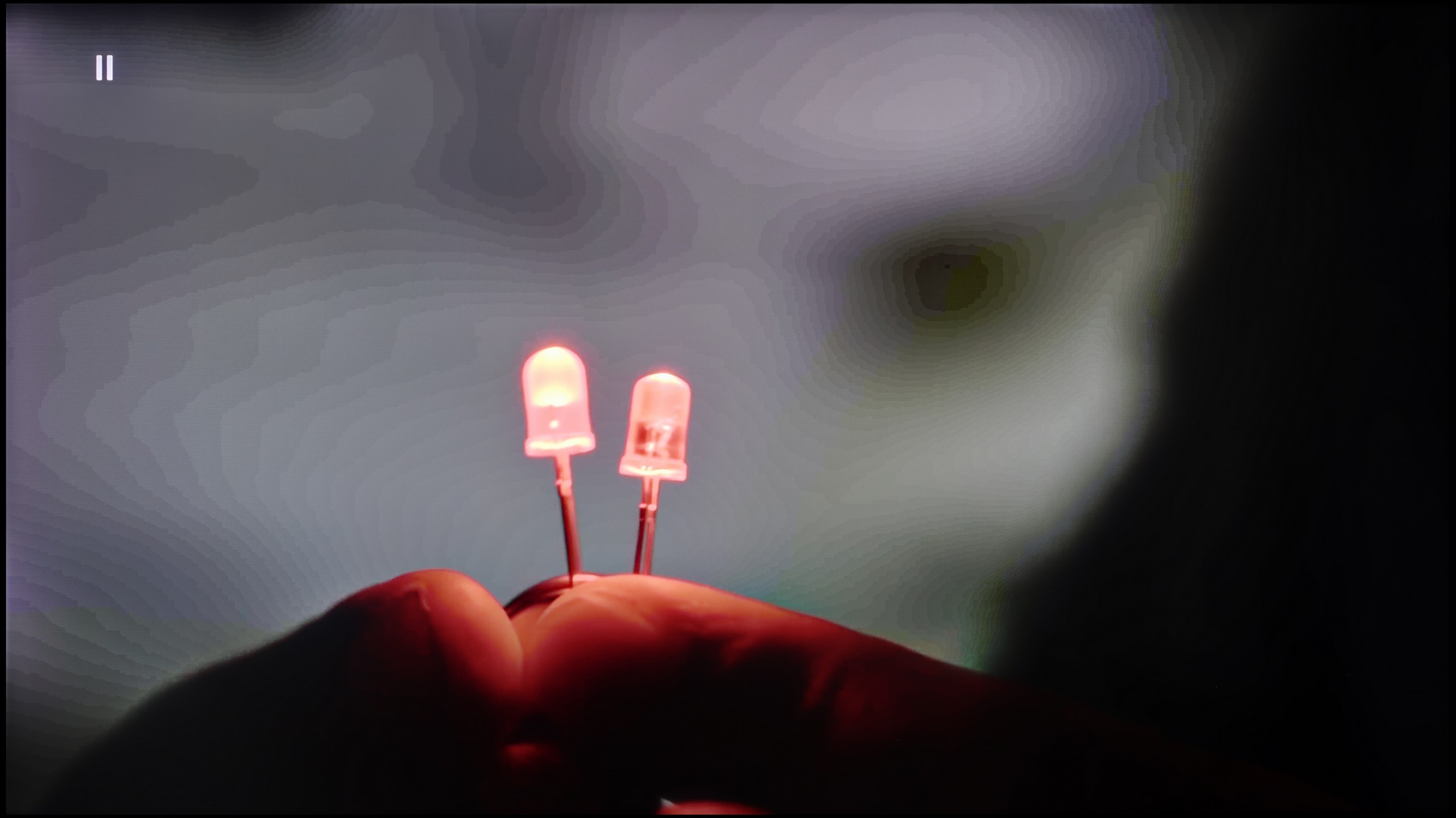
Image without overscan on the SD signal


Philips OLED 809 didn't perform too well in the test for the smoothness of tonal transitions. Moving on to the part of the test where we assess the behaviour of the TV's algorithms, we will again check the function responsible for removing posterisation. In fact, such a function exists in the menu and has several options available. As you can see in the photo on the left, although its presence has been confirmed by us, it is not useful. Only at the highest setting does it effectively remove disruptions, but it blurs the entire image in the process. Therefore, it is completely unusable.
Time and again, you and we find ourselves watching materials of lower quality. In this case, the quality of the image upscaling algorithms can have a salvaging effect. We must admit that those implemented in OLED 809 work quite efficiently and improve the image quality without visible artefacts. You can only notice slight edge blurring, but it is unlikely to be noticeable during normal viewing.
Digital image processing on the TCL C9K is rather average. The smooth tone transition feature seems to be present, but activating it practically changes nothing – colour bands are still visible, and it can unintentionally highlight elements we’d rather keep hidden, such as object textures. Fortunately, it doesn’t remove film grain, but that’s poor consolation given that the effects are still meagre. It’s therefore hard to recommend using this option.
On the other hand, image scaling presents itself much better. Lower quality materials look quite decent – characters and backgrounds are rendered clearly, although of course, with sources like 576p, the laws of physics cannot be fooled. Occasionally, there’s characteristic edge distortion of objects, but that’s the fault of the source itself, not the algorithm. A plus for not having issues with overscan – the image isn't artificially cropped or enlarged.
Blur and motion smoothness
8.5/10
7.8/10

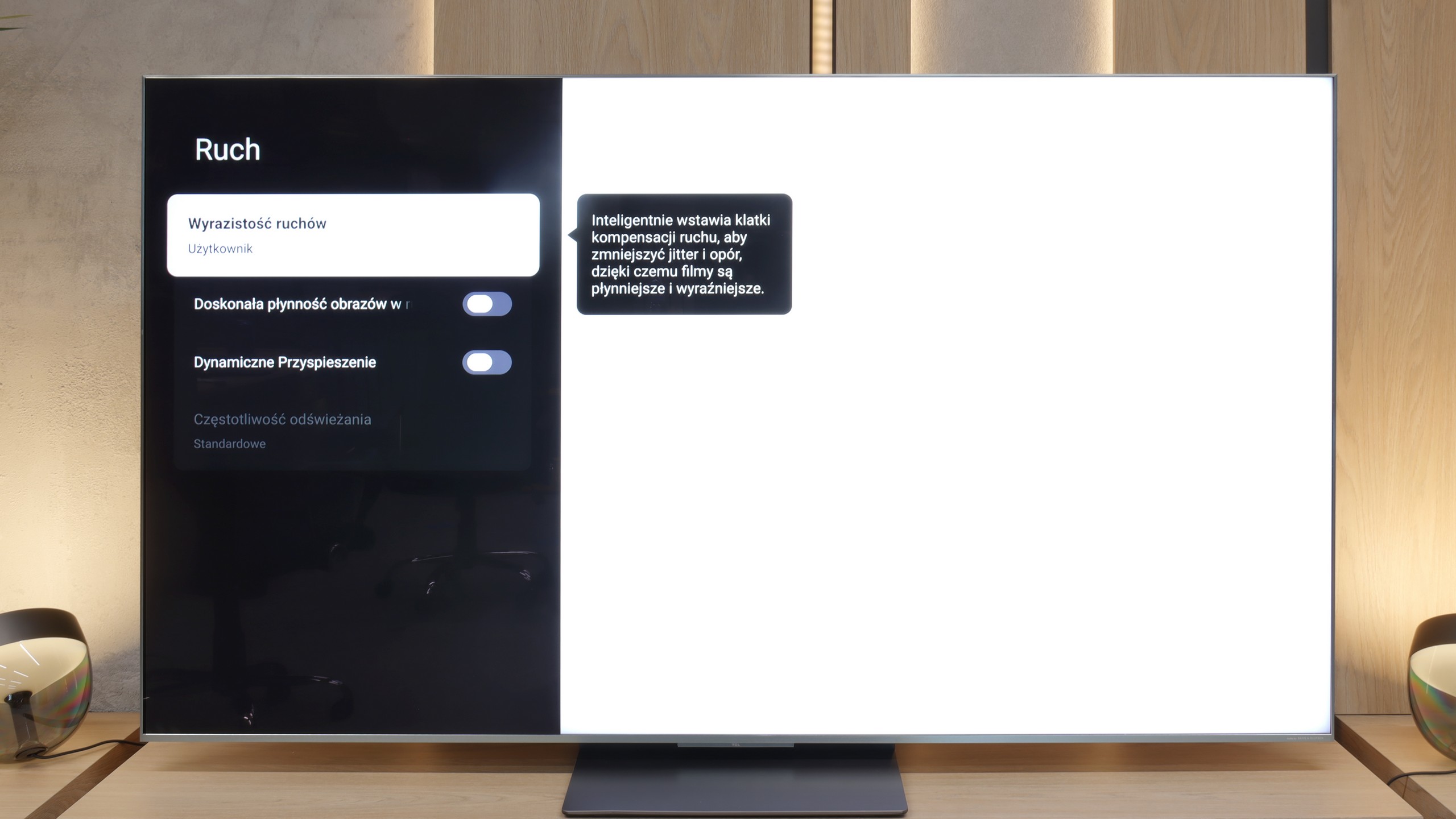
Blur (native resolution, maximum refresh rate):





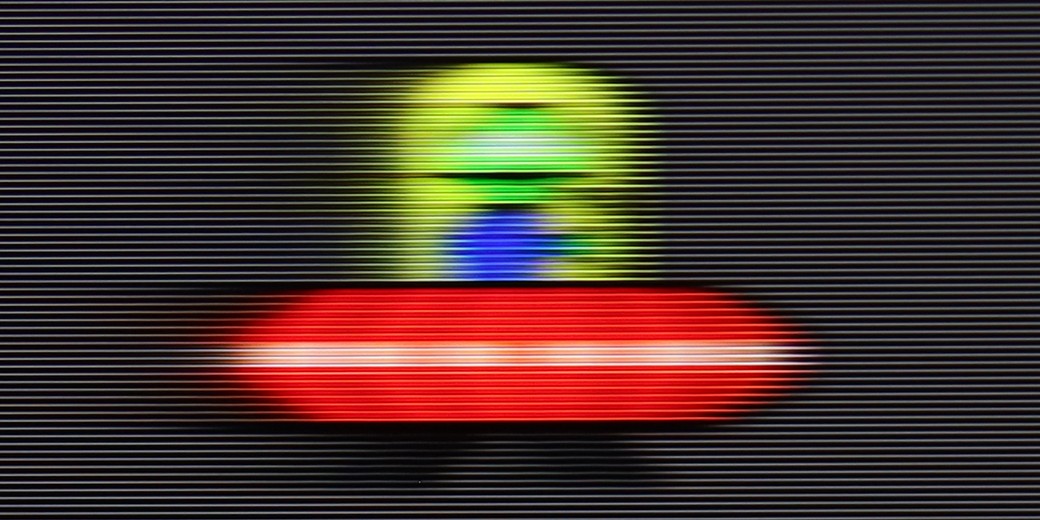
Blur (BFI function enabled):



Smużenie ():
Smużenie (1080p@288Hz):


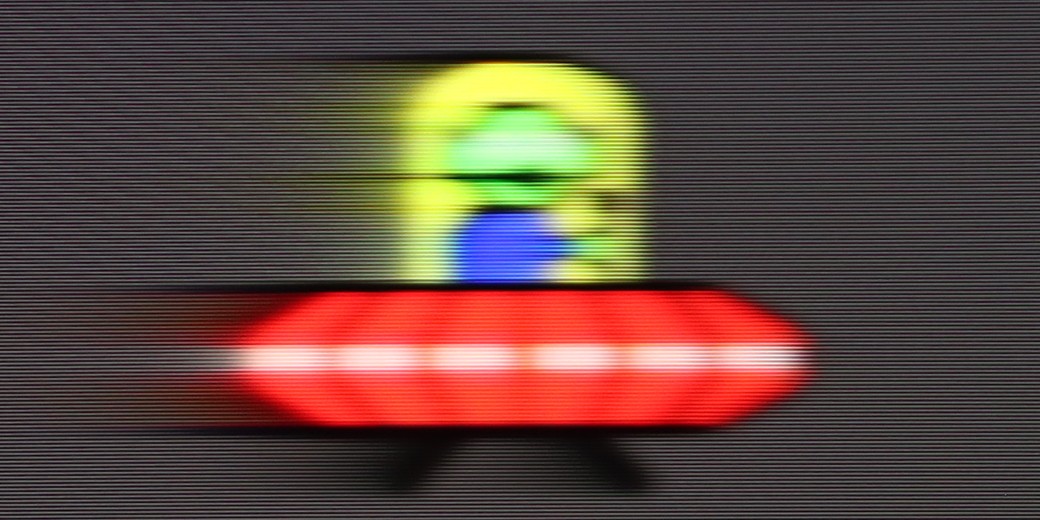
The maximum refresh rate we can set on the tested television is 144 Hz. This value can be achieved by connecting it to a really powerful PC. In the case of consoles or television, everything remains the same. For those who require high movement fluidity or dislike the characteristic judder of films recorded at 24 fps, the manufacturer has prepared a fairly advanced motion smoothing system. In the dedicated tab, we will find the “Smoothness” slider responsible for eliminating judder and “Blur Reduction”, which helps increase the sharpness of dynamic elements. The function works very well and granularly, meaning each of the settings has a real impact on the perception of motion. We also mention that it works at a refresh rate of 120 Hz, as it operates on the multiples of film or television materials. Thanks to such an extensive set, every user will find their happy medium. In the photo, we present our choice, which is slight smoothing without the soap opera effect.
Motion is influenced not only by the settings on the television but also by the response time of the panel itself. OLED televisions feature the best response time on the market, which in the case of 809 is about 0.1 ms. There are no IPS/ADS or even VA panels that significantly come close to the results of organic panels.
Similar to the C8K, the C9K is also a really fast TV – both figuratively and literally. It features a 4K panel with a refresh rate of 144 Hz, and at lower resolutions, the panel can even ramp up to 288 Hz. Such speed translates into practice – while watching sports or playing games, the image looks very smooth and clear. Additionally, in movies, we get an extra motion smoother called Motion Clarity, which allows you to adjust the smoothness to your own preferences – from cinematic "judder" to almost theatrical smoothness.
Console compatibility and gaming features
10/10
9.8/10
- ALLM
- VRR
- VRR range40 - 144Hz48 - 288Hz
- Dolby Vision Game Mode
- Correct implementation of HGIG
- 1080p@120Hz
- 1440p@120Hz
- 4K@120Hz
- Game bar

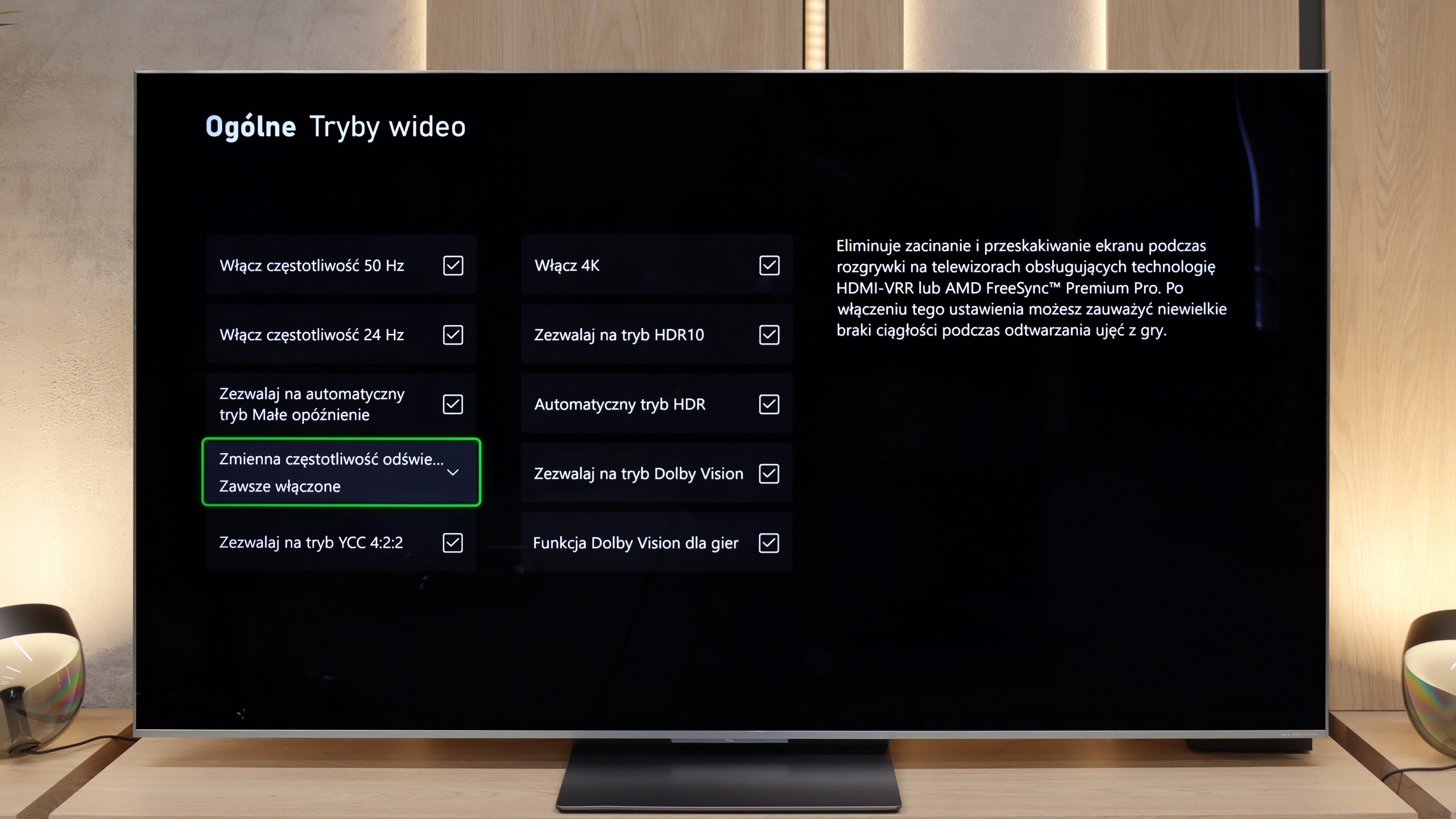

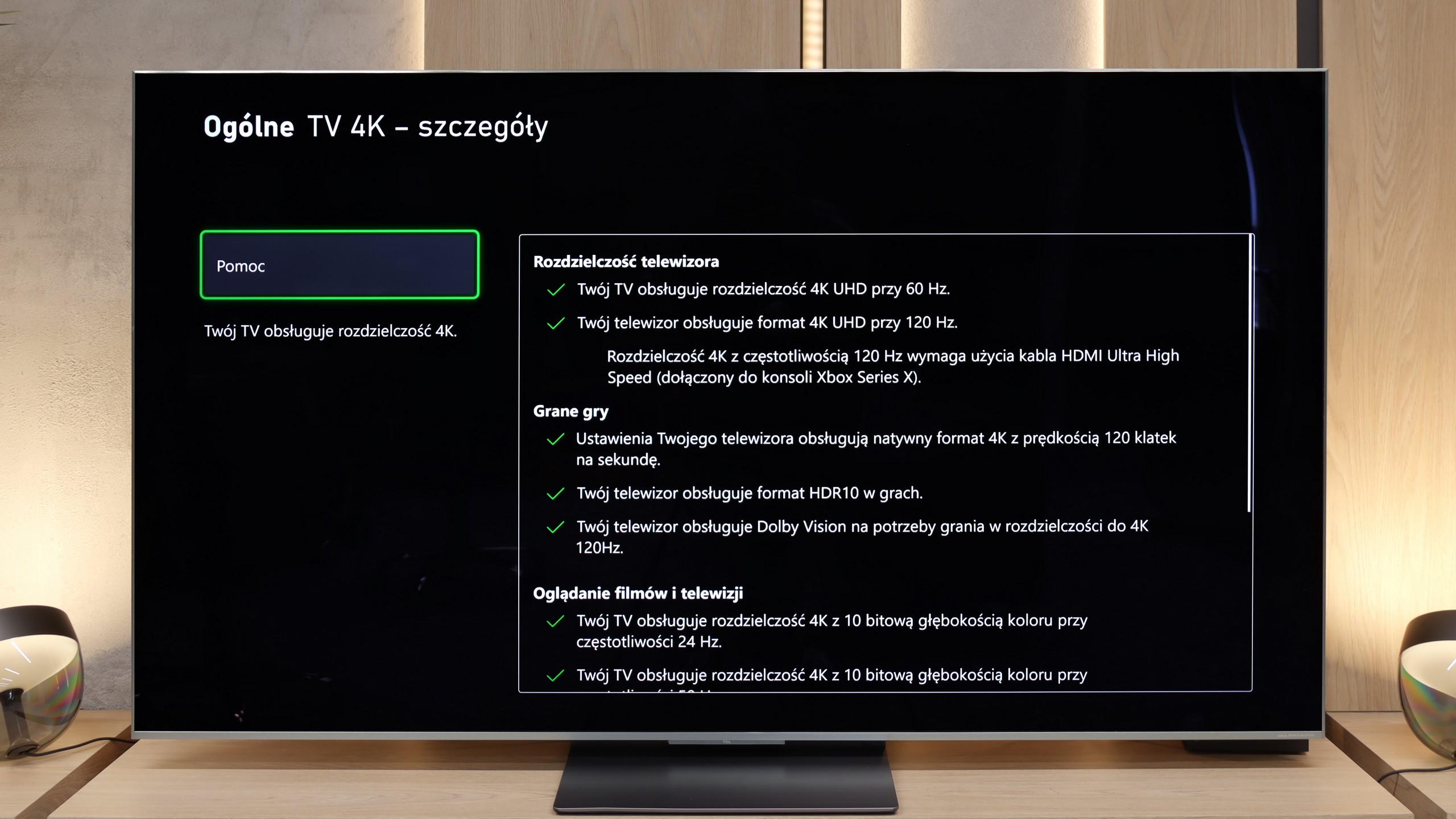

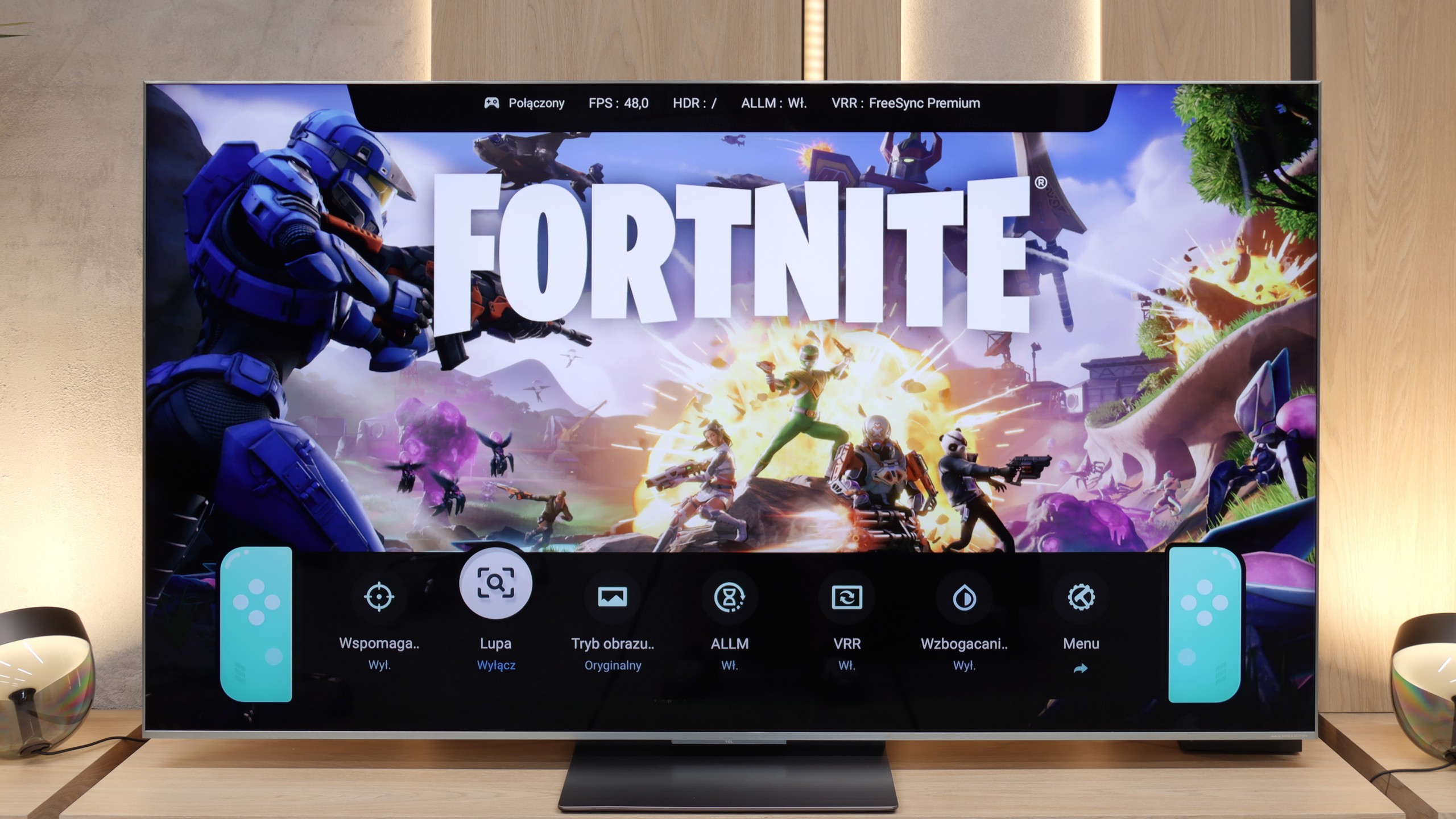

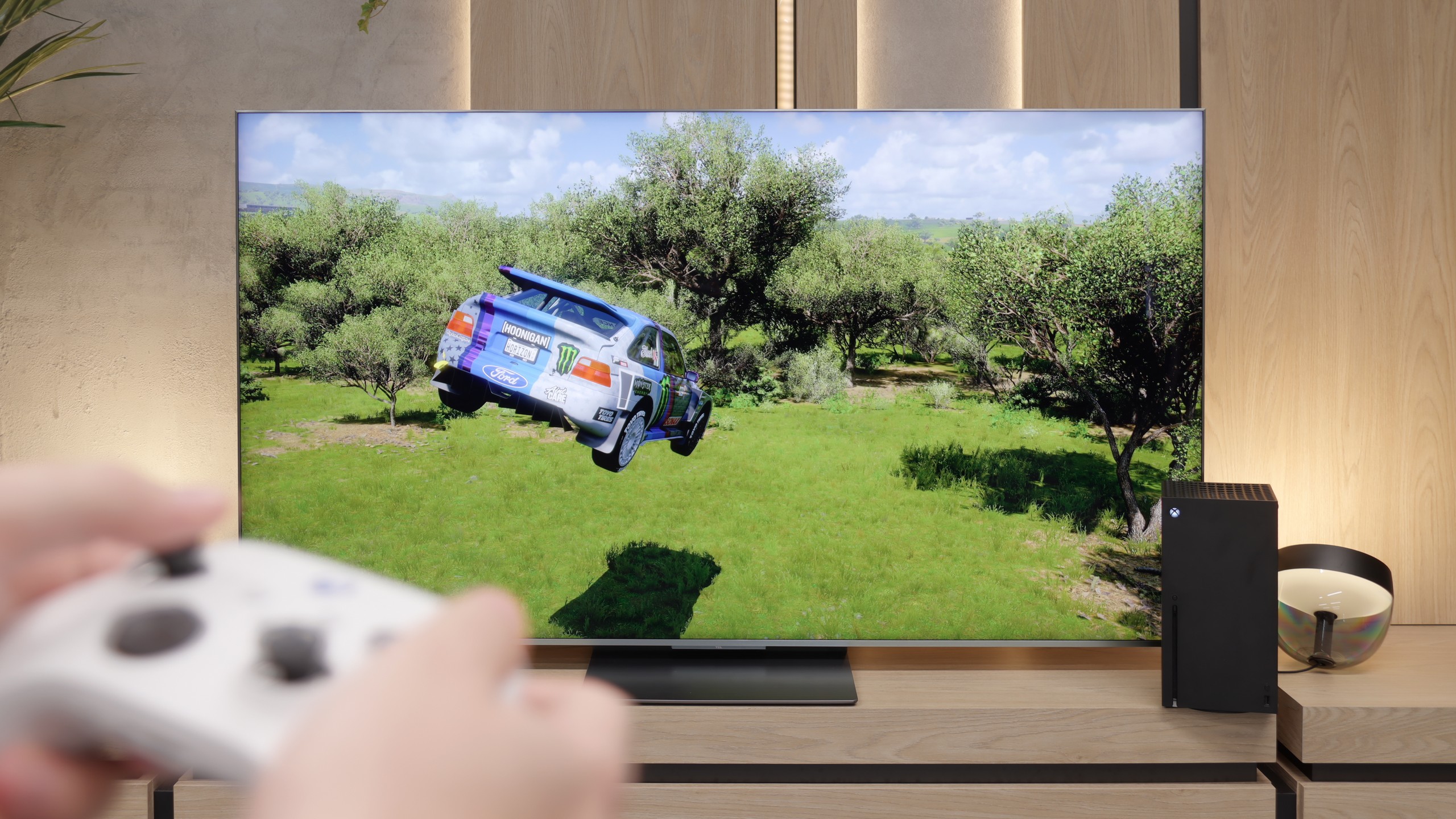
The Philips OLED 809 supports all the technologies included in the HDMI 2.1 standard, and during our tests, each one activated without any problems. Therefore, we must state that this television is perfect for all gamers, both those using a console and a computer. It's worth mentioning that the manufacturer has implemented the HGIG mode, which is a great alternative to Dolby Vision, which unfortunately on the OLED809 is unplayable due to the very high input lag.
A nod to gamers is also the inclusion of a dedicated GameBar, which allows monitoring of current gameplay parameters and quick adjustments of settings. There is also a function to activate a crosshair, which will be very useful when shooting from a sniper rifle, but from the so-called hip. Additionally, we can also find a shadow enhancement function for better visibility in shadows and a colour filter for gamers with visual impairments.
In summary, the OLED 809 is a very good and versatile device for gamers. Anyone who purchases this television for gaming does not need to worry about anything, as it is simply designed for gaming. Especially since features such as VRR, ALLM, G-Sync, FreeSync, and HDR Dolby Vision gameplay will allow for an even deeper immersion in their favourite title. Lastly, we should note that the only downside of the television in game mode is the artificial sharpening of the image, regardless of the settings, and it cannot be 'softened.'
From a gaming perspective, the TCL C9K is a complete tool. It features two (out of four) full bandwidth 48 Gbps HDMI 2.1 ports, so all the key technologies work: VRR (Variable Refresh Rate) and ALLM (Auto Low Latency Mode). Additionally, the manufacturer has included a really intuitive Game Bar that allows you to quickly check the most important parameters and adjust settings without fumbling through menus. Also, TCL's policy is a plus – the TV isn’t afraid of any HDR formats, even in game mode. Whether it's HGiG or Dolby Vision for the Xbox Series S/X console – everything works as it should, giving the player plenty of freedom.
Input lag
9.5/10
9.8/10
SDR
HDR
Dolby Vision
The results of the input lag measurements on the Philips OLED 809 are at a high level, regardless of the signal or resolution. All gamers will surely appreciate the manufacturer's efforts, thanks to which a game running at 4K120Hz with HDR has only 5 ms of lag, which is practically unnoticeable even in online games. One should not forget about the proper implementation of the game mode with Dolby Vision, which can be praised for a similar response time of 13 ms. In this case, the Philips OLED 809 receives our highest score.
In terms of input lag, the TCL C9K performs exceptionally well. With 120 Hz content, the lag is only 7 ms, placing it among the very top televisions available on the market. Naturally, with 60 Hz materials, the input lag increases to around 15–16 ms, but in practice, this has little impact on the final responsiveness of the screen to our actions on the controller.
Compatibility with PC
6.4/10
8.6/10

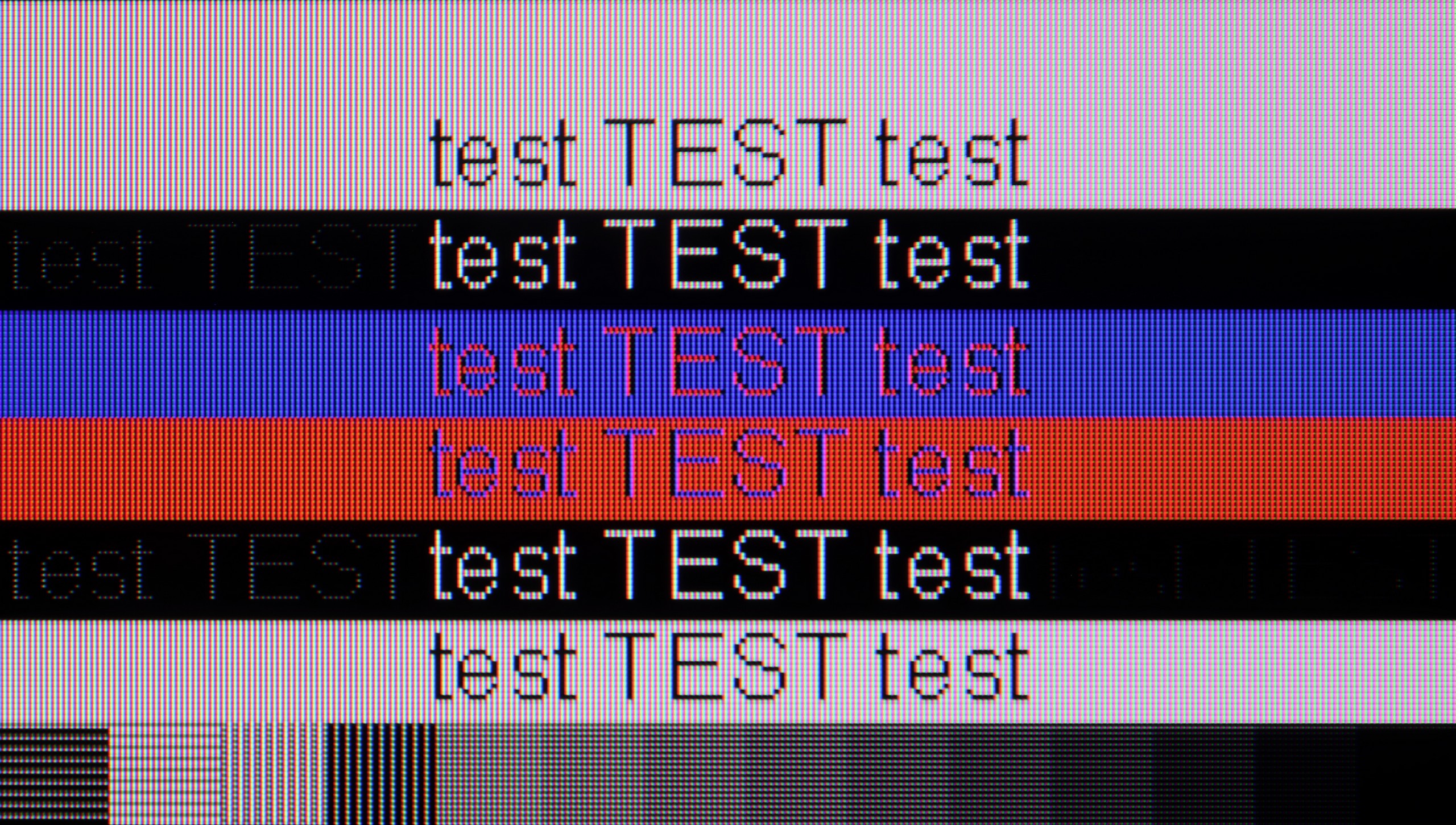
Just like in games, the tested television performs excellently, but when it comes to everyday text work, it doesn't quite measure up. Its latency is very low; however, the issue lies elsewhere. The television does not support chroma 4:4:4, which results in unpleasant font blurriness, regardless of the given refresh rate. While this is not usually a problem in games, it can be quite annoying during text work due to poor readability. Additionally, the pixel layout in WOLED matrices doesn't make things easier for it.
When it comes to office work, the TCL C9K does not disappoint – thanks to support for chroma 4:4:4, text readability is at a good level, so typing or working with documents shouldn’t be a problem. While there are some minor issues with dimming horizontal lines, in everyday use it’s hard to call this a real flaw. However, the biggest potential of the C9K reveals itself in PC gaming. Here, the television showcases its full capabilities – it can switch to lower resolutions, such as Full HD, and display images at up to 288 Hz. Additionally, it supports both G-Sync and FreeSync, so synchronisation with the graphics card works excellently. It’s hard to have any significant complaints about this setup – it’s truly a top-tier screen for gaming on a computer.
Viewing angles
7.4/10
4.5/10
A widely known advantage of OLED panels is their efficiency when viewed even at sharp angles. There is no noticeable drop in contrast or colour saturation. However, a characteristic feature of panels produced by LG Display, which are not used in top models, is a tint in marine or cyan shades when viewed from a wide angle.
A new feature in TCL televisions for 2025 is the WHVA panel, which is designed to provide better viewing angles than standard VA panels. And indeed – progress is noticeable. When viewing the screen from the side, the image is clearer and the colours do not degrade as quickly as in previous models. However, this does not mean that we are encountering the level of top coatings or solutions found in IPS panels, and certainly not OLEDs. The image remains readable, but the brightness noticeably drops. This is definitely a step forward compared to earlier TCL models, but not a full revolution yet.
TV efficiency during daytime
5.5/10
7/10

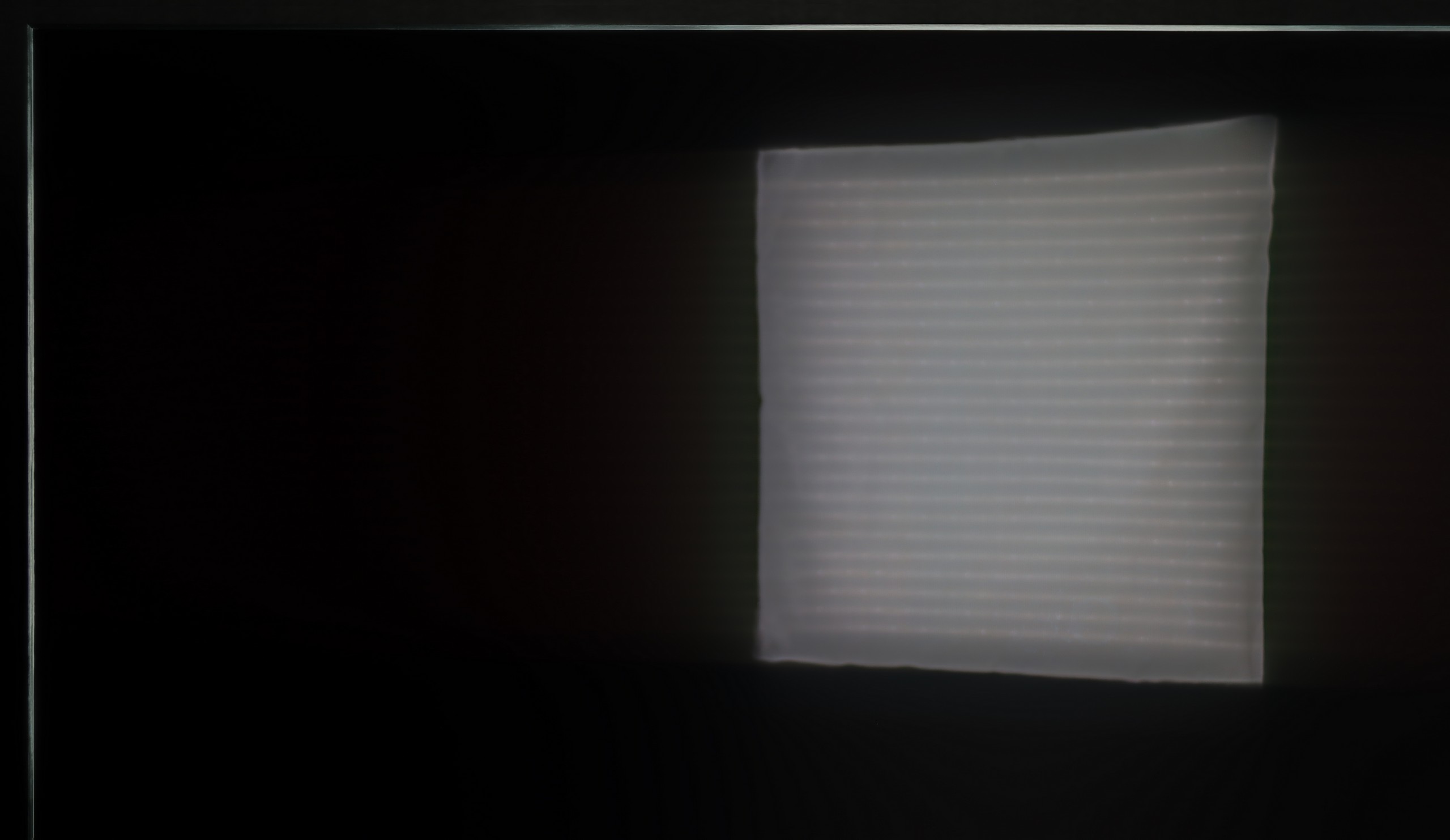

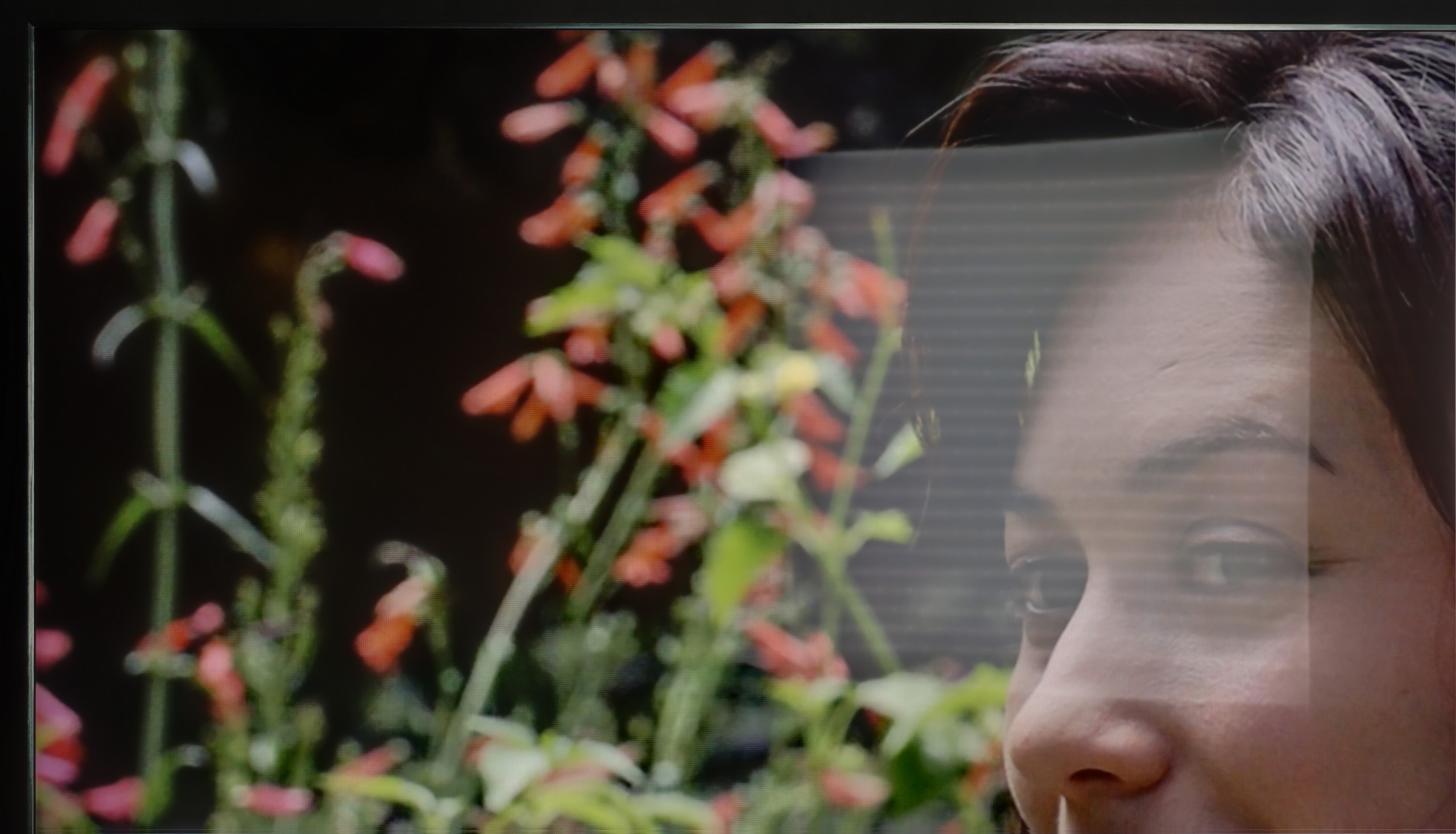
Matrix brightness
Average luminance SDR
TCL C9K: 642 cd/m2
Philips OLED809/819: 322 cd/m2
For many years, the issue of the performance of OLED TVs during the day has been raised. Many people still believe that these are not receivers intended for such use. They probably have a point, particularly when it comes to screens from several years ago. Technology has advanced, and currently, there are no objections to recommending such a TV for today. Admittedly, a glossy screen doesn't sound like something that would support this claim, however, it's hard to argue against the pictures that you can see for yourself. Another point we would like to highlight is the contrast during daytime use. This, in contrast to QD-OLED panels, and even OLEDs equipped with MLA technology, is higher. This is due to the absence of excited quantum dots and micro-lenses.
The new WHVA matrix coating has its strengths and weaknesses. On one hand, it handles smaller reflections quite well, but on the other hand, with stronger light sources, it shows that the suppression of reflections isn't at the highest level. Fortunately, the coating doesn't ruin what's most important: the blacks and colour saturation. This is definitely a plus, as in many competing models, compromises in this area are much more painful. Additionally, it has very high brightness – in SDR content, the C9K can achieve an average of 650 nits in SDR materials. This performance is more than sufficient for watching TV or films in challenging lighting conditions, even on a sunny day.
Details about the matrix
Subpixel Structure:

Panel uniformity and thermal imaging:
Philips OLED809/819
TCL C9K
TV features
7.8/10
7.7/10
- HDMI inputs2 x HDMI 2.0, 2 x HDMI 2.1 48Gbps2 x HDMI 2.0, 2 x HDMI 2.1 48Gbps
- OutputsToslink (Optical audio), eARC (HDMI), ARC (HDMI)Toslink (Optical audio), eARC (HDMI), ARC (HDMI)
- Network InterfacesWi-Fi 2.4GHz, Wi-Fi 5GHz, Ethernet (LAN) 100MbpsWi-Fi 2.4GHz, Wi-Fi 5GHz, Ethernet (LAN) 100Mbps
- TV receptionDVB-T, DVB-T2, DVB-S, DVB-S2, DVB-CDVB-T, DVB-T2, DVB-S, DVB-S2, DVB-C
Classic features:
- Recording to USB (terrestrial TV)
- Recording programming
- Picture in Picture (PiP)
- RF remote control (no need to aim at the screen)
- Backlit remote control
- Teletext
- Audio only mode
- Possibility to connect Bluetooth headphones to the TV
- Possibility to simultaneously use Bluetooth headphones and the TV speaker
Smart features:
- AirPlay
- Screen mirroring (Windows Miracast)
- Wyszukiwanie głosowe
- Voice search in native language
- Ability to connect a keyboard and mouse



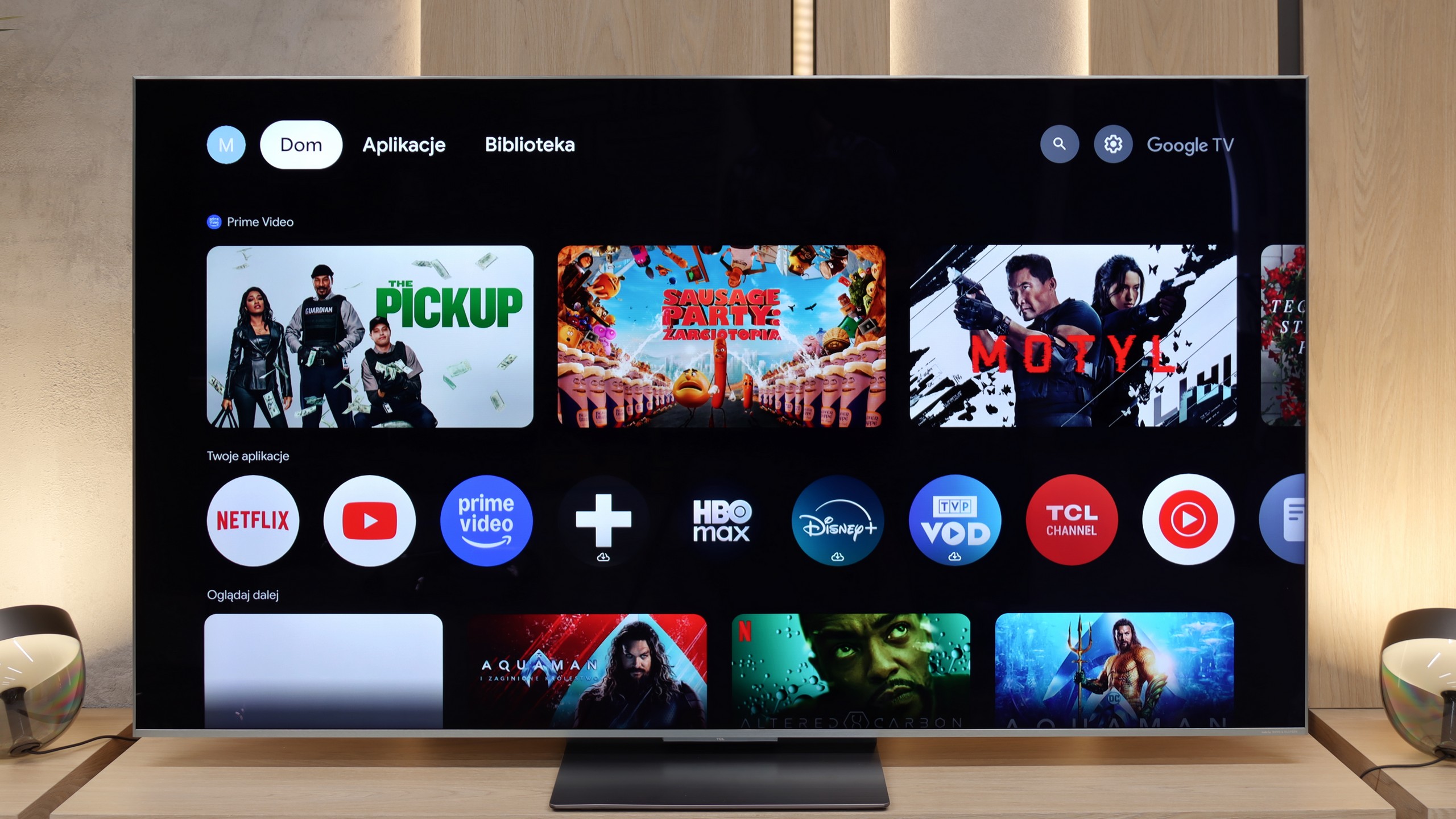
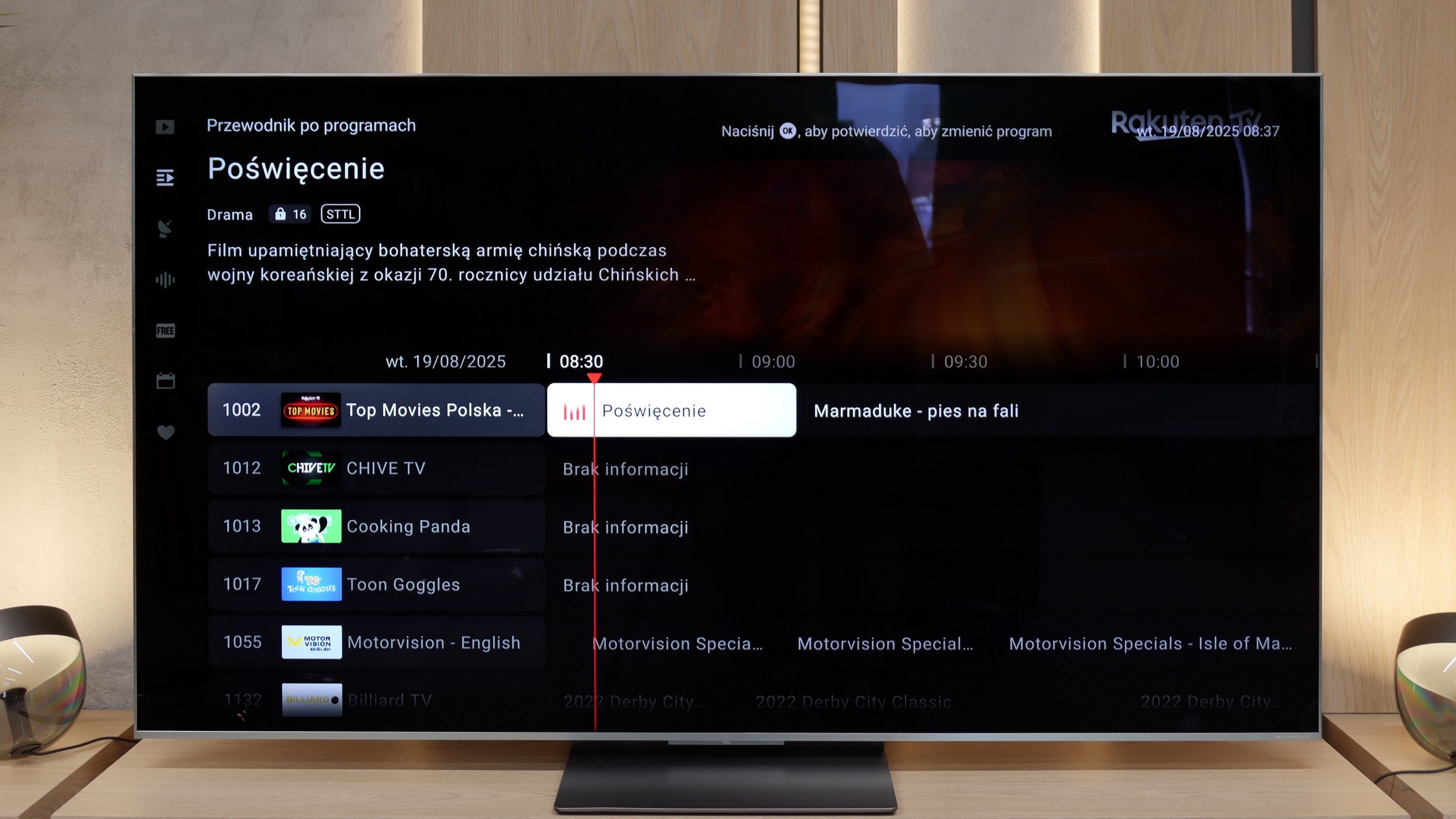
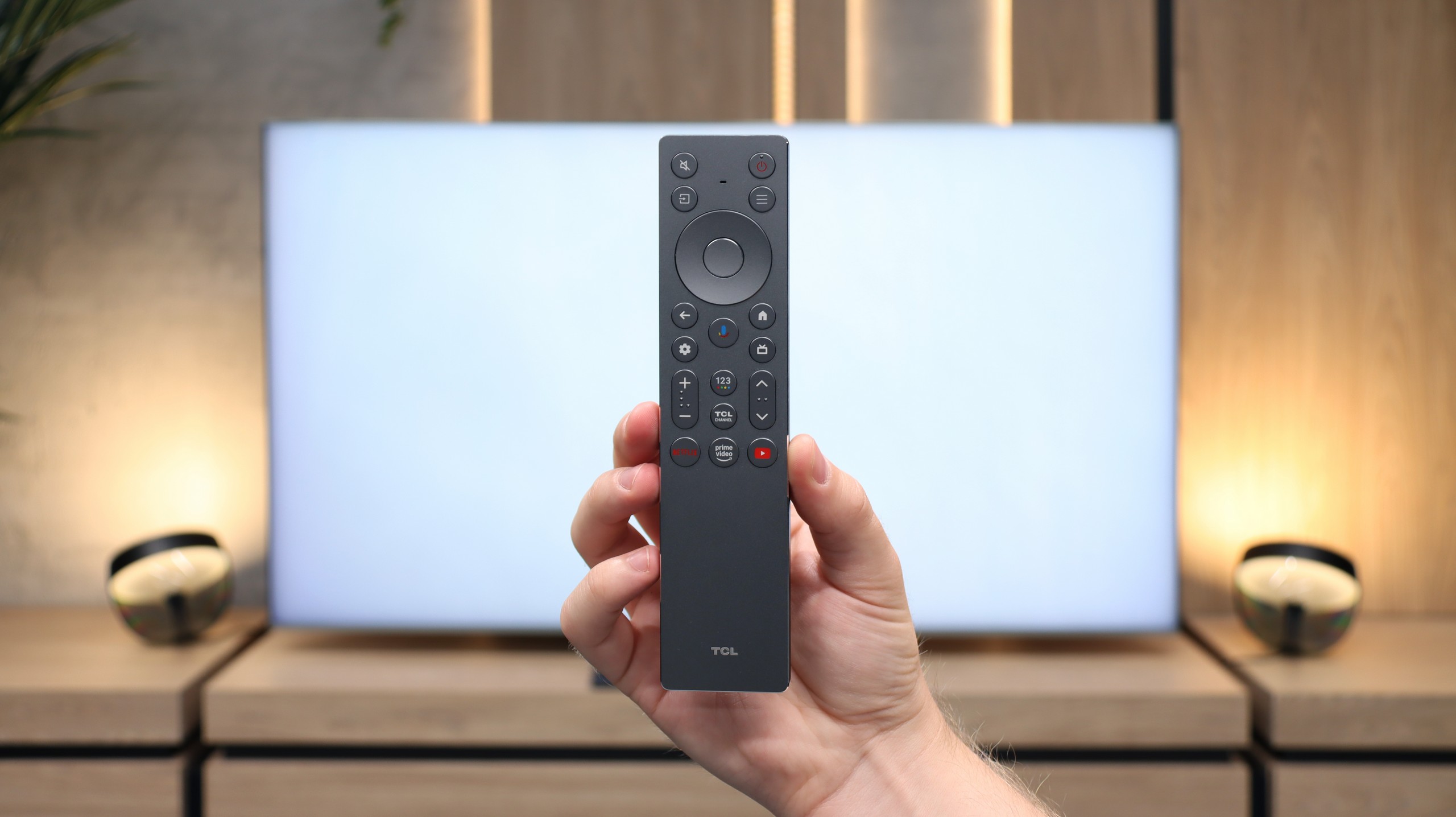
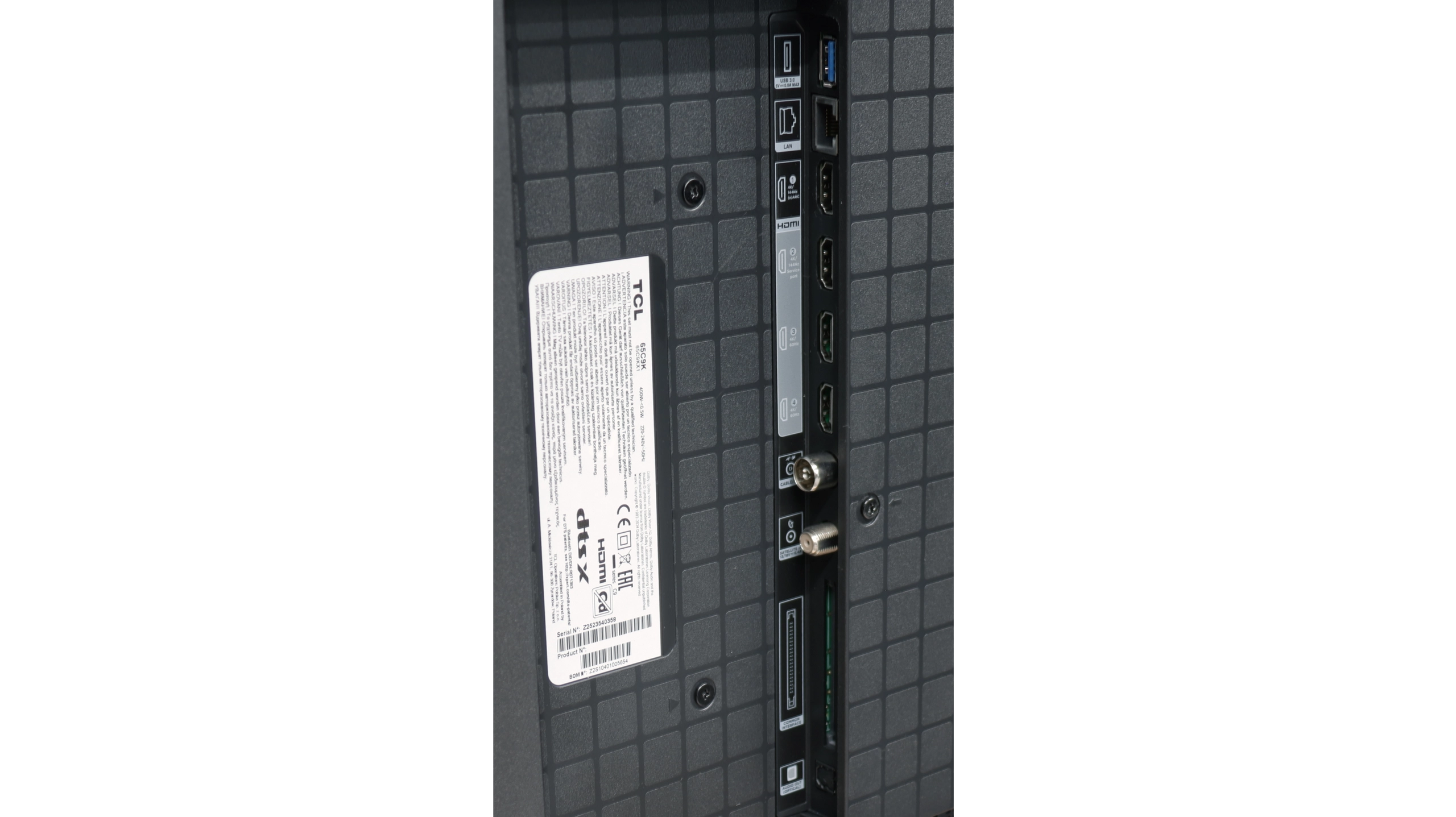
Before we dive into the software that controls the television, it’s impossible not to mention the biggest distinguishing feature of the manufacturer's televisions. This is, of course, the multicoloured Ambilight backlighting, which is located on the back of the device and displays colours tailored to what's happening on the screen, often allowing for an even greater immersive experience. The Philips OLED 809 is powered by the Google TV system. This is an undeniable advantage compared to some other models from the manufacturer, which use the proprietary TitanOS system, significantly more closed off and limited in terms of available applications. With Google TV, we can install practically any application, both from the store and directly from online repositories via an APK file.
The Google TV system also offers many conveniences related to control. We can easily connect a keyboard with a touchpad, which greatly simplifies typing queries and navigation. Additionally, thanks to integration with Google, we can issue voice commands using the remote, which are quickly and accurately interpreted by the system.
In summary: Google TV is currently one of the most popular systems on the market. Thanks to a powerful CPU, it runs very smoothly and stably, without freezing or stuttering during testing. This is definitely the best option for those who want to get the most out of their television's capabilities and appreciate the openness and versatility of the system.
Classic TV Features
In terms of basic TV functions, the TCL C9K does not disappoint – it has everything that most users expect. The EPG guide operates smoothly, teletext is available, and pairing Bluetooth headphones, a mouse or a keyboard goes off without a hitch. However, it should be noted that in the Google TV system – just like in other TCL models – there is a lack of more advanced options such as programme recording or picture-in-picture (PiP) mode. Some people may find this unsatisfactory, especially if they have used such features with competitors. It's also worth mentioning that we only have one USB port – it's enough to connect a hard drive with movies or a USB stick, but if someone plans to use multiple storage devices, they may find this lacking.
Smart Features
While in terms of classic solutions the TCL C9K does not stand out, in the field of smart functions it showcases its full potential. The Google TV system is currently the most popular platform and it’s clear why – the app library is enormous. Netflix, YouTube, Disney+, HBO Max, Amazon Prime Video – all are readily available. Only those very attached to more closed ecosystems, like Apple Music, will feel the absence. A significant advantage is the built-in voice assistant – it works quickly, understands natural commands, and allows for convenient control of the TV: from switching channels to opening apps, as well as searching for content or checking the weather. It’s in this area that the TCL C9K shows that a smart TV is more than just a “TV with internet” – it’s a tool that genuinely simplifies everyday use of the device.
Playing files from USB
9.5/10
9.2/10
Supported photo formats:
Maximum photo resolution:

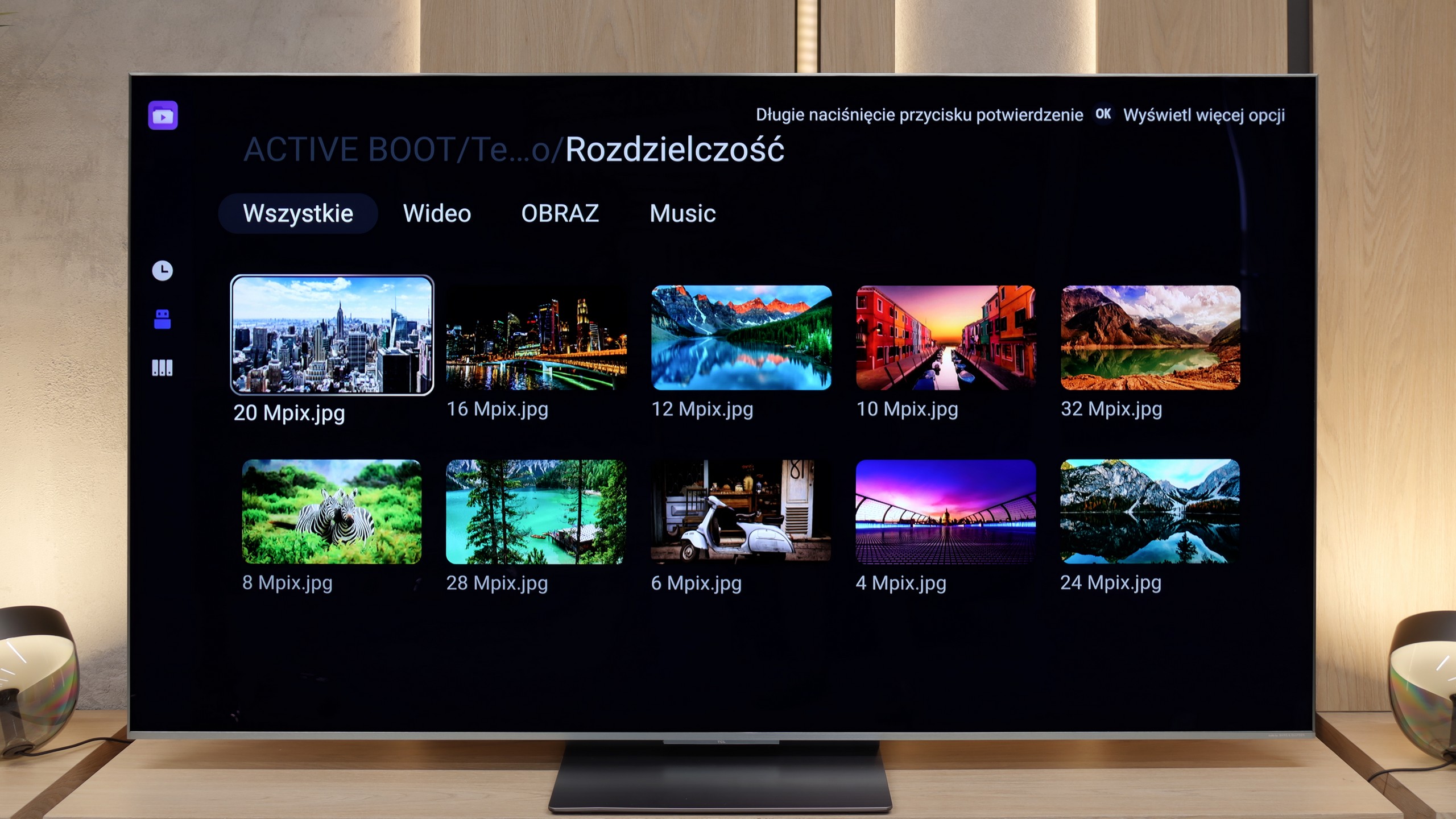
The default file player on the Philips OLED 809 is quite impressive, although it does have some drawbacks. It handles a wide range of video file formats exceptionally well, except for two less common ones. It deserves high praise for its inclusion of all the checkboxes confirming playback of various subtitle formats. The TV can manage any photo resolution, making it an excellent screen for viewing family albums or studio photos. The rest, including supported photo and audio formats, is satisfactory, and those formats the TV cannot play are either uncommon or obsolete. Moreover, it's not a problem, as we can download an app from the app store that will solve these issues.
The C9K had no trouble handling most of the materials we threw onto the USB drive – from MKV formatted films, through older AVI files, to audio tracks in DTS and FLAC. The only issue remains the lack of support for HEIC photos from Apple devices, but this is a problem for practically all manufacturers. However, the most important thing is that if someone is missing support for some exotic format, they can always reach for an alternative player available in the Google Play store. And this is where the advantage of the Google TV system shines through – the ease with which you can expand the television’s capabilities with additional applications.
Apps
9.6/10
9.6/10














































Sound
7.1/10
7.9/10
- Maximum volume-77dB
- Dolby Digital Plus 7.1
- Dolby True HD 7.1
- Dolby Atmos in Dolby Digital Plus (JOC)
- Dolby Atmos in Dolby True HD
- DTS:X in DTS-HD MA
- DTS-HD Master Audio
At the outset of this paragraph, it should be noted that sound quality is always subjective. In our opinion, the audio system that the manufacturer has equipped the Philips OLED 809 is at quite a high level. The bass is well-defined, but at the same time, it does not overshadow the mid and high tones. Looking at it from another perspective, when choosing a TV in this price range, we are more likely to already have an additional audio system. In this context, the tested television will definitely not disappoint, as it supports practically every important standard, including Dolby Atmos and, more importantly, DTS-HD Master Audio.
The sound in the TCL C9K is handled by the same setup as in the C8K model – prepared in collaboration with Bang & Olufsen. It features a 4.2.2 configuration with a total power of 90 W, consisting of eight speakers arranged to create a fuller sense of space. And I must admit – the effect is impressive. The dialogues are clear, the highs and mids sound pure, and the bass does not falter, even during louder screenings. Of course, this won't replace a dedicated soundbar or home theatre system, but for built-in speakers – there’s really something to listen to.
*During maximum volume tests, we noticed unusual behaviour from the audio system. With the slider set to 100%, the television reaches around 76–78 dB, but it’s clear that it tries to generate more power, after which the sound level is immediately corrected back to the mentioned value. On the other hand, when we lower the volume to, say, 70%, it initially decreases as expected, but after a moment, it slowly rises back up to that same level of 76 dB. This effect gives the impression of an aggressive limiter at work, which regardless of the slider position always brings the volume back to a single level. We checked this behaviour multiple times, and in each case, the result was the same – no additional functions for 'intelligent' volume adjustment or AI were active during these tests.
Acoustic Measurements
No acoustic data
77dBC (Max)
75dBC


